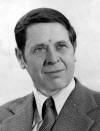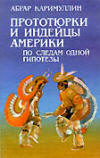A close study that would examine a polysemy of the words, the laws of the sound change, could find many
more words in the Sioux language that are similar in the semantics and form with the Türkic words. For example,
the word "basdi" in the Sioux language means "cut off", "to cut with a knife". In
the
modern Tatar language "basty" means "attacked", "plundered", "intruded
with force", in the Karagas language "bais" means "wound", in the Sakha
(Yakut) "bas" is "wound", in the Turkmen
and Turkish "bas" also means "wound".
| Sioux Dakoto language |
Translation |
| Basku, baso, basipo |
To cut off, a cut (of something) |
| Baskica |
Cut by pressing |
| Baskita |
Slaughter with knife |
| Baskin |
Attacking with knife |
|
etc. |
Even (Russian) people unfamiliar with Türkic languages
would easily catch the etymology of this
word, because of the Russian word "baskak" (Turkic loanword meaning "tax
collector". The semantics is analogous to the "cut" in the Englisg expressions "my cut, your cut,
10% cut" - Translator's Note).
A dictionary book by Ervin Gudde [16] on California toponymy has
toponyms formed from the Sioux Indians language, but already in the "style" of folk etymology of the
American English language (Likely, mostly they were first adopted by
Spanish-speaking settlers, and then assumed by English-speaking settlers through codification in
various legal documents - Translator's Note). So, on the coast of California one of the lagoons
is called "Batequitos". According to the author of the work, this name comes from an American
Indian word "bateqe tos" meaning "marshland", "low land". In the Tatar language "batynki"
means "low, depressed", and "tesh" means "place". In the Tatar language the combination
"batynky tesh" is quite active, and like the Sioux word it means "low lying, marshy land". The same
work gives a word "bolinas" in English spelling, from the American Indian "bolenas",
which in form and sense is identical to the Tatar word "bolyn" - "lagoon", "meadow". One more
example from that dictionary is the word "chiquita", which comes from the American Indian "chiketo", "chiko",
which in the Sioux language means " very small, tiny", with the same meaning this word is in the
Tatar language as "cheki" - "small". In the names of the California rivers, and in the USA as a whole
frequently comes up the word "aha" (current, flow) - in the Tatar "aga" is "current,
flow", and likewise frequently comes up the word "hu" - (water) "flows", which in Bashkir
means "water" (Common Türkic "su", with "h/s"
alternation among
Türkic phyla - Translator's Note). One of the rivers is called "milk" - "milk", the name
comes from a translation of an American Indian word "sue" meaning "milk".
And really, because of calcite sediments, the water in the lower part of the river is light opaque,
reminding milk. And the word "sue" is very close to the Tatar word "sut" meaning "milk". One
lake has a name "yamul". In the opinion of Gudde this word was formed from an American Indian word
"ha" = "hu" (water) and "mool" (much, abundance), and in the Türkic languages
the word "mul" has a same meaning
"abundance", i.e. "yamul" means "abundance of water" or "plenty of water",
or just a "lake".
In Florida, next to the Sioux
Indians live Timucha Indians, whose language John Swanton describes as "absolutely
distinct from the languages of other Indians, including Sioux" [17].
A small article of that author about the kinship terms in the Timucha language lists
relationship terms which in the form and sense are practically almost identical with the Türkic terms:
| isa |
mother |
| isanam |
my mîm |
| isaya |
your mîm |
| iti |
father |
| itinam |
my father |
| itaye |
your father, his father |
| ule |
a name given to à child by à woman |
| ulema |
my child |
| inihi |
married woman |
| qui |
child (in Kazakh language "kui" means
"child", "lamb") |
Coming from the Türkic languages, understanding of these words practically does not present any
difficulties. Even the suffixes of the composite words coincide with such suffixes in the Türkic languages.
Close parallels of these words in almost the same form and with the same meaning also are found in the
Sioux language. Possibly, John Swanton it is not correct when he says that Timucha language is
not similar to any language of other Indians?
It is probably impossible to find a person studying
American Indians who would not know an interesting work "Search of two worlds" by an
American anthropologist T.Kreber [18], who describes
the life among white people of a last mohican from the American Indian tribe Yana. In that work
we were attracted by the name of the Indian, who on the question "who is he?" answered that he
is "Ishi". T.Kreber says that this word means "Man". This is a usual answer when
encountering
representatives of totally different tribe, many peoples' names are coming from the type of his answer, for example, ethnonyms: "Doig" (Doich/Deich?), "Nivh", "Nenets",
etc.
The word "ishi" resembles very much the Sioux word "ichi" with a meaning "comrade". In
the Tatar "man"
also is "keshe", which has an extra "k" in comparison with "ichi". Can be that T.Kreber from "cichi"
made "ichi", missing "k"? (Other Türkic
languages also have a variety of versions: kishi, kiji, keshe, kisi, kihi, kizi, all with initial
"k" - Translator's
Note).
Despite the many works about Sioux Indians, their language is nearly unstudied. This is also true about the languages of other American Indians. Because of that,
most
different opinions are floating about the relationships and classifications of the American Indian languages. Some
Americanist linguists estimate a total of more than a thousand of American Indian languages, others
name about five hundred
languages and vernaculars. With of Indian languages classification the situation reaches a
comic proportions. Because of obscurity of many Indian languages, some Americanists in their
classification were relying not on the materials from the languages of these Indians, but on
the similarity or
distinction of their ceramics, types of clothing or dwellings, and even on weaving forms and use
of hammocks, let alone the attempts to classify the languages by anthropological attributes:
hair color, forms of the separate parts of the face, etc. Especially poor were the works
on Central and South America Indian languages [19]. And because of the lack of
uniform descriptive principles and systematization, the use of accumulated material for comparative
studies and classifications is severely limited. As the Soviet Americanists noted, "the dictionaries
of South American Indians, compiled by scientists of various nationalities, could provide a richest
material for illustration of misunderstandings of all degrees and directions. Hardly worse are the attempts of
cabinet scientists to reduce all the works to the inaccuracies in knowledge, and with such
juggling construct a grammar of these languages. The authors of the grammatical books usually composed
them following the norms of morphology and syntax of the West-European languages. That is done
almost without regard to the special features inherent to the American Indian languages"
[20]. Further, it is also truly noticed that "the various classifications offered by modern American linguists,
viewed as language dictionaries, in effect differ little from those offered by Catholic missionaries and
first attempts by the 19th century travelers in formulating the linguistic groups" [21]. Attempting
to
compare the Riggs and Williamson dictionaries, we encountered sharp divergences between them in
the transcription of the words and in the phonetics. Even a two-volume substantial work by F.Boas
[22] about classification of American Indian languages, used as an authoritative
edition, is predominantly based on the classification by territorial and geographical factors,
causing
that
obviously related languages appear in different language groups, for
example, the classification of the Mayan languages, Southern Aztec groups, and Sioux-Hoka languages.
After we got acquainted with Otto Rochrig's work on Sioux-Dakota language,
we immediately recalled the work of a known Soviet expert on the Maya Indians history and language, Yu.V.Knorozov "Ancient
Maya Script System (Decoding experience)" [23],
which subsequently developed into Yu.V.Knorozov monograph "Script of Maya Indians" [24].
In his first journal publication, Yu.V.Knorozov gives a reading of about 300 words of Mayan
script, which struck us with many similar, and even identical with
the Türkic lexicon
words in both the form, and in contents. On revisiting again these works, we found
about 50 such words, which can be easily understood knowing any of the Türkic languages,
without bothering
in search for equivalents with the maze of the Türkic archaisms.
Here are some examples from the Yu.V.Knorozov decipherings and their parallels in the Türkic languages:
|
Mayan language |
Türkic languages |
| Yash [1] |
New, green |
Yash, yashel |
Young |
| K'un |
Sun [2] |
Ken |
Day [3] |
| Ich |
Inside |
Ech |
Stomach, guts |
| Osh |
Three |
Och [4] |
Three |
| Kuch |
Burden |
Kech [5] |
Force |
| K'ull |
Raise arm |
Kul [6] |
Hand |
| Chab,
chabkuna |
Fell a tree |
Chap, chabu [7] |
Chop |
| Ch'akaan |
Felled (tree) |
Chapkan |
Cut down (tree) |
| Chukul |
Fell a tree |
Chuku |
To chisel |
| Ah-chy |
Hunter |
Auchy [8] |
Hunter |
[1] other sources note also a meaning "green"
[2] other sources note also a meaning "day"
[3] In Kazakh language also "sun"
[4] Tuva, Kazakh - "ush"
[5] Tuva "kuchu", Sakha (Yakut) "kuus"
[6] Tuva "hol", Kazakh "kol"
[7] Kazakh "shabu"
[8] Tuva "Àhchy" |
At first encounter with Yu.V.Knorozov work, such close parallels appeared
improbable to me, I saw that as a
random coincidence.
But when I became familiar with the Otto Rochrig's work, the work of Knorozov immediately came to my
mind,
reviewed it again,
this time from a different angle. And that prompted me to search of
an answer to the question raised in the Otto Rochrig hypothesis about genetical relationship of Sioux language,
and some other American Indian languages, with the Türkic languages.
At first I reviewed the works in Russian about the culture and history of the Maya and other Indians
in Central and South America [25].
I became familiar with almost all publications of the USSR Academy of Sciences Mikluho-Maklai
Ethnography Institute about American Indians, and also with the numerous journal
publications, and fiction literature about the Mayan life, Incas, Aztecs, with the travel descriptions to the Indians published in Russian.
These books lead me through the once blossoming cities of Maya, Aztecs, and Incas, acquainted me with
the greatest monuments of architecture, noisy sports and ritual celebrations,
monumental cult buildings; with these books I traveled with archeologists searching and
excavating in jungles cities, forgotten and ruined by time and elements,
I saw their sacred senots (atriums ?) and religious rituals, richest gold ornaments,
I was horrified
by the
atrocity and perfidy of Costera and Pissaro adventurist gangs, I saw the ashes of the Maya books burnt by
the Catholic missionaries, execution of people who held on to them, I saw the great past of Maya and
other Indians, and their deprived position under the bloody hands of the conquistadors.
The conquistadors and Catholic church did everything possible to eradicate from the memory of American peoples their history
and culture, they plundered not only the material wealth, but also the souls of the people, they
istalled their customs
and traditions... I have been struck that the Maya, Aztecs, and Incas, without a knowledge of the
mankind great discoveries that accelerated progress, like an iron, a potter's wheel, and a
wheel, have left monuments of their culture, huge pyramids compatible to
Egyptian... From the ashes of the Catholic church fires and conquistadors survived "Chilam balam" and "Popo-l-Vuh",
the monuments of Indian literature and history, in the translations of which, like from
other works about Indians, I tried to spot American Indian words interspersed there [26].
I learned, for example, that in the Maya, like in the modern Tatar language, a frog is called "baca"
(Spanish, Italian, Latin "rana" - Translator's Note), and this word is widely used in forming
the
names of the lakes and reservoirs, for example, in Quintana Roo district of Yucatan peninsula [27]
(Vaca lake = Cow Lake ?). There
is there even gulf "Bakalar" - i.e. "frogs" - a frogs' gulf. A word "bacalar"
is perfectly identical to the Tatar word "bakalar", where "baka" is a frog, and "lar" -
is a
plural suffix, exactly like in the Mayan language the "lar" is a plural suffix. And in the toponymy
of the Tatar ASSR (administrative appellative in former USSR - Translator's
Note),
in the Middle Volga region are plenty of lake and cove names formed with the word "baka",
like
in "Bakaltai" ("Frogs' Mountain), etc.
Tens of the words, very close and frequently totally phonetically and semantically identical to the
words of the Türkic languages were spotted in the works on the history and culture of Maya Indians:
| Mayan language |
Türkic languages |
| Kosh |
Kind of bird |
Kosh |
Bird |
| Imish yashche |
Green fruit tree |
Jimesh |
Fruits |
| |
|
Yemesh |
Green, unripe |
| |
|
Yashel jimesh |
Fruit |
| Ichin |
Well |
Echu |
To drink |
| Yash k'in |
New sun |
Yash ken |
New day, new sun |
| Aak |
White, light |
Ak |
White, light |
| Ik |
Two |
Ike |
Two |
| Mol, mool |
Plenty, harvest |
Mul |
Abundance, plenty |
| Muluk |
Rich year |
Mullyk |
Abundance |
| Pa, Pao |
Water |
Su, hu |
Water |
| Ku |
Spirit |
Kot |
Spirit, soul |
| Chachak |
Very beautiful |
Chechek |
Flowers, very beautiful |
| Tsik |
Fencing, tract |
Chik |
Fencing, tract |
| Chul |
Water |
Chul |
Water (Tuva) |
| Bin |
I |
Min |
I |
| Ichil |
Inside |
Ech |
Stomach, guts |
| Imi |
Female breast |
Imi |
Female breast |
| Chalan |
Snake |
Elan (Jylan) |
Snake |
| Vat |
To break |
Vat, vatu |
To break |
| Ooch |
Food |
Ash |
Food |
| Ba |
Fish |
Balyk |
Fish |
| Akan |
Uncle |
Aga |
Maternal uncle, respected man |
| Sots |
Flying something |
Sots |
Bat [1] |
| Shagan |
Kind of tree |
Chagan |
Kind of tree |
| Al |
Son, child |
Ul |
Son |
|
etc. |
|
[1] Mishar dialect of the Tatar language |
It should be noted right away that the Mayan words cited from those works are
written in Russian transcription (re-transcribed to English),
which does not always
match the phonetics of these words in the Mayan language, visible for example from
the comparison of the same words in the Knorozov transcription and in the Russian translations of Landa de Diego
work. The discrepant spelling replaced "ch" with "ts", "u" with "o", "a"
with "o", "ch" with "sh", "i" with "e" and vice-versa, omitted some consonants, and even omitted vowels. For example, we shall cite different
transcriptions of the Mayan word "snake" as "Tsilan", "Chalan", "Tsalan" "Chilan", etc.
Many toponyms of Yucatan peninsula strongly resemble Türkic words, like "Kotoch", "Tsilan", "Tulum", "Yashil",
"Ichmul", "Tas", "Tapich" - "Tepich", "Kachi", "Shaman-sama", "Chigen", "Sayil", etc.
Many examples from Mayan language mentioned in these non-linguistic and non-philological
works are given in explanatory fashion, their examination should be mindful of that. So, the "kosh" (bird) is noted as a kind of a bird, while in the Tatar
the "kosh"
means a bird in general. These works did not record exactly what kind of a bird was meant. This explanatory
character of the "translations" of the Mayan words complicates the search for parallels (equivalent words)
in the Türkic languages. So, the American Indian word "yashchilan" is explained as a "location". And from
this compound word which consists of the Mayan "yash" (young, green) and "chilan" (snake),
is clear that it means "green snake" or "young snake" and it is a name of that location,
not the term "location", etc.
In addition, because of incompatibility of many phonemes in different languages, the transmission of the words
from one language in a script of another language always
contains a danger of phonetic distortion,. Moreover, words of one language are frequently transmitted in
another language in a
deformed fashion, so that even experts usually have difficulties in catching their original
meaning.
Researchers noted that the transmission of Mayan words in Spanish-lingual sources, and in
other-lingual sources, are rendered by different graphemes and different phonemes. The same words differ
at different
authors, who may even write in the same language; moreover, frequently the words are recorded
with "incomplete" sonority.
Even locations, which would seem to already be phonetically more "universal",
even in Russian different authors give differently: "Itsmul" - "Ichmul", "Chichan - Tsichan ", "Kotuch" - "Kotoch".
In this respect is enlightening a review of the toponymy, formed from the Türkic words, in
Russian, to observe how they differ from the initial names. So,
from "sary tau" (Yellow mountain) came "Saratov", from "Sary su" (Yellow water)
came "Tsaritsyn" (lit. "tzar's city"), from "Kumer"
(coal) came "Kemerovo", from "Temen" (ten thousand) was formed "Temnikovo", "Tyumen", etc.,
a non-specialist would hardly establish the initial sound of these words or their etymology.
Comparing the Mayan words with the words of Sioux language, we find that they have words
identical in sound and in sense, like "aak" (white), "ik" (two), "hao"
(water), "bin" (I), "ich" (stomach), "imi" (female breast), "akan" (uncle), and others.
In addition, both these languages are agglutinative, and their euphony is synharmonic, but somehow these languages are
assigned to different groups of the American Indian
languages (Uralic and Altaic languages are agglutinative and synharmonic.
In Russian philology, synharmonism serves as one of the main criteria in attributing words and
languages to the Türkic (Altaic) group, especially so in etymological studies of the loanwords
in Russian -
Translator's Note).
Could these similarities havebeen spotted by the American Indeologist philologists
(here and on: Indeologist = Native American Indeologist, vs. Indian Indeologist -
Translator's Note) ? Can it be that our
observation flagged out solely chance concurrences? It turned out that
this similarity was already asserted, and an opinion was expressed that the language of Maya Indians originates from
the language of Sioux-Hoka Indians, that Maya ancestors earlier lived in America
(modern USA), and were a part of Sioux-Hoka, and then they moved
to the south, to the Central America [28]. Encyclopedia also noted that Aztec Indians come from the
Sioux-Hoka family of languages [29]. Since the
author does not illustrate lineage with linguistic examples, we shall cite our own examples
which exhort this position. Our task was facilitated by a fact that the Mayan language was investigated better
then others. À number of dictionaries and grammar books exist
for this language [30]. But among them not
a single work attempted a comparative study of the Mayan language with the languages of other Indians.
Following that trail resulted
in a stmbling on a work of different character, which became a godsend for us.
Stig Wikander (1908-1983)
Fairly recently, in the 1967, a Swedish magazine "Ethnos" published an article of
an Orientalist from the Upsala University Stig Wikander entitled "Is there Maya group of the
language related to the Altaic Family?", with a continuation published in 1970
and 1971 [31]. In Sweden, the Orientalistics is quite advanced,
including studies of languages, culture, and history of Africa and Oceania peoples. The Upsala University,
or rather its library, accumulated a rich collection of eastern manuscripts in Türkic, Arabic,
and Persian
languages [32]. S.Wikander is a wide profile Orientalist, he authored a number
of works on eastern languages, including the Türkic languages. To study the live eastern
languages, he visited eastern countries, including Turkey. In the above
article about the connections of the Mayan language with the Altai languages he writes: "The first time when
I heard the talk of Maya Indians, I was stunned with similarity of their language with
the Turkish, with similarity of their intonation which just before that I heard in Istanbul. Such an impression certainly
could be deceptive. When I started studying the Mayan language, the texts in their language,
I immediately encountered a mass of words which looked precisely as Turkish" [33].
Because Stig Wikander extensive article was published in a specialized magazine for a narrow circle of readers,
and is not represented in our libraries, I think it is necessary to stop on it in detail. His observations and conclusions are directly
related with the
theme of this article. Stig Wikander writes about a presence in the Mayan language not only of "plethora of obviously identical words" with Turkish, but also about the
identity or similarity of the grammatical system of these languages. In his cycle of articles he
first gives a comparative study of lexicon for these languages, promising to address the grammar in
coming works.
He writes that most widespread in Central and South America bird is called "tucan", which
matches the Turkish "dogan" (actually, the Turkish "ĝ" is
silent, the word is pronounced "do'an", but in other Türkic languages "g" is pronounced -
Translator's Note), the ancient Türkic "togan" with a meaning "falcon"
both in the Mayan and in the
Türkic languages. In the pre-Spanish America a largest animal in the Mayan language
was called "tzimin", which according to Wikander, has a common origin with the Türkic "deve", "taba" in
the sense
"camel", and for Maya "northern deer" (northern deer
in meso-America or SE USA? - Translator's Note). In the Mayan language "kasnak" (belt), as asserts Wikander, matches
the Türkic "kahnak" with the same meaning. In Tatar (and in
Russian - Translator's Note) "kushak" means the same. If Knorozov the Maya word "green" - "young" reads as "yash", Wikander reads
it as "uah" (yah) and identifies it with a Kuman (Cuman, Couman) word "óàsh", with
the Türkic "yesyl".
Among the Wikander examples are words which we also saw in the Sioux Indian language:
| Mayan and Sioux Indian language |
| im |
to suck |
| imi |
nipple, female breast |
| chu |
milk (Rochrig, "seu") |
| chupar |
suckling
(In Tatar - "chuper", "chumer" - to suck, suck noisily) |
Wikander notes that adverb forms in the Mayan and Türkic languages are identical, also identical
is the word formation. The Maya words "alan", "yalan" correspond
to the Türkic "al",
"alt", "alchok" (under, in front); "ichi", "ichil" in Türkic
are "ich", "ichre" (inside); "toe" in Türkic is "tagi",
"tagur" ("yes", "until then, as"). Further, the author stops on the phonetics of
the Mayan and Türkic languages, discusses similarity and differences; the differences, in the opinion of Wikander, arose from the transition of some sounds to others, Wikander points out that "L" in the Mayan
language changes to "R" in Türkic languages, the glottal "k" in Türkic languages is frequently replaced
with velar "r" in Türkic languages. Talking about systemic changes, Wikander also
illustrates his statements with examples:
| Mayan language |
Türkic languages |
| Bicil |
Intestines, guts |
Bagirsak |
Intestines, guts |
| Bul |
Foam |
Buram |
Foam, whirlpool |
| Bul |
To tear |
Burmak |
To weave, twist |
| Bolan |
Large mass |
Bol |
Plentiful |
| Chopol |
Perverted |
Capur |
Speckled |
| Yoklel |
Smouldering coals |
Yak |
To burn |
| Chek |
To cover |
Cek |
To move |
| Chik |
To appear |
Cik |
To appear, leave |
| Tic |
To plant |
Dik |
To stick, plant |
| Tur |
To stop |
Dur |
To stop |
| Tuy |
Hair lock |
Duy |
Hair |
If Wikander had also turn to the Volga region's Türkic languages, he would find
closer examples for these words both in phonetics and in the sense. For example, in the Tatar
language "tic" is pronounced not as "dik", but as "tyk" (to stick),
exactly like in the Mayan language; "tur"
(to stop, stand) is pronounced not as "dur", but as "tor", like in the Mayan language.
The scientist further notes that in the Mayan language initial "p" is widely used, which in
his opinion is an unusual event or absent in Türkic languages. This Wikander's statement does
not reflect all Türkic languages. In some Türkic languages, for example, in Azeri,
Turkmen, Uzbek, and in some dialects of the Tatar language "p" is frequently used in the
beginning of the words. (Starostin data base for 13 Türkic languages and
1820 words contains the following frequencies for initial "p": Turkmen, Cuvash,
Gagauz, Turkish, Azeri, Karachai Kumyk, Tatar, Kazakh, South Alaic, Uzbek, Uygur, Tuvinian, Yakut,
Khakassian, Kirgiz ~ respectively 0.60%, 5.27%, 0.55%, 0.22%, 0.22%, 0.71%, 0.22%, 2.75%, 0.71%,
0.33%, 0.05%, 5.93%, 0.11%. Thus, only Cuvash and Khakassian demonstrate a higher palatalisation,
with Kazakh being a runner-up. Wikander's comment is correct in respect to Azeri, Turkmen, Uzbek,
and Tatar.
- Translator's Note).
Without dwelling on the author's other observations in phonetic comparisons between
the Mayan with Türkic languages, the following are some more examples from lexical comparison:
| Mayan language |
Türkic languages |
| Àñàn |
To shout, a shout |
Agit, agla |
To shout, a shout |
| |
|
Akyru |
To holler, to shout |
| Aak |
Current, to flow |
Ak |
Current, to flow |
| |
|
Agym |
Current |
| Bet |
To stop |
Bit |
To stop |
| |
|
Bet, beteru |
To finish |
| Bagir |
Breast |
Bagir |
Breast |
| |
|
Beger |
Breast |
| BikFit |
Little boy |
Eget |
Guy |
| Bllim |
Sign, knowledge, seal |
Belem |
Knowledge |
| Bin |
To rise, (you) rise |
Men |
To rise, (you) rise |
| Box |
Naked |
Bos |
Empty |
| Ceh |
Deer |
Kiylk |
Deer |
| Chem |
Boat |
Gemi, kami, keime |
Boat |
| Cuch |
Load, Burden |
Guc, kech |
Force |
| Kat |
To change |
Kat, katu |
To mix |
| Kil |
To come |
Kil, kilu |
To come |
| Oc |
Pes |
Oêñå |
Heel |
| Poloc |
Stout, well-fed, large |
Ulug |
Large, great |
| Poy |
Toy |
Oupa, uiyn |
Game, play |
| Pudz |
To disappear |
Uc |
To depart |
| Q'anil |
Blood |
K'àn |
Blood |
| Ti |
To bite |
Tish, dish, |
Tooth |
| Toqmaq |
Beater |
Tukmak |
Beater |
| Tzucul |
Dwelling |
Chokyr |
Pit, den |
| U |
Moon |
Ay |
Moon |
| Uayoh |
To doze |
Uyu, oyu |
To doze |
| Wach |
To untie |
Ach |
Open |
| Yaklel |
To flare, burn |
Yak, yagu |
To burn |
| Yom |
To connect |
Yum, yom |
To connect |
| Chal |
Cliff |
Chal |
Embankment, slope |
| Tas |
To bring |
Tasy, tashu |
To drag |
| Baldiz |
Wife's younger sister |
Baldyz |
Wife's younger sister |
| Bats |
Monkey |
Biñin |
Monkey |
| Bil |
To know |
Belgu, belu |
To know |
| |
|
Bilge |
Sign |
| Boya |
Paint, picture |
Buyu |
A paint, to paint |
| Ciiol |
To enjoy |
Gull, kelu |
To laugh |
| Ch'i |
Edge, coast |
Chik |
Edge, border |
| Ike |
Two |
Ike |
Two |
| Its, itz |
Plant juice |
Ic, echu |
To drink |
| Pulut |
To smoke, smoke |
Bulut, bolyt |
Cloud |
| Sat |
To spend |
Sat, satu |
To sell |
The words shown (in the original article) in Russian alphabet are taken from the Tatar language . Wikander gives variations of these words in the Mayan language, but the Tatar parallels are closer.
The Türkic variations are shown in Russian letters from lexicon of the Tatar language
(In this posting all Cyrillics is Latinized - Translator's Note).
In his comparison, S.Wikander gives about two hundred similar words between these languages
(Assuming a root dictionary of 2,000 words, that list covers about 10% of the Mayan lexicon -
Translator's Note). For a number of Mayan words he finds parallels in the Tungus languages, some
parallels are from the Japanese and Korean languages (Also belonging to the Tungus
group - Translator's Note). But the overwhelming majority of
parallels comes from the Türkic languages. After analyzing lexicon and phonetics, the
scientist comes to a conclusion about impossibility to explain these similarities with only
diffusional influence of one language on another, because no such contacts existed in the
known past, the American Indians did not (closely) contact with Europe
before the discovery of the New World. The final conclusion of Stig Wikander is that the Mayan
languages and the Altai languages both in phonetical and in lexical relation have much in
common, which testifies to their genetically common origin in the past.
Wikander in his work also gives examples from Kechua (spelled Quechua
in Spanish alphabet - Translator's Note), similar or identical with the words of the Türkic languages.
The Mayan language is included into the Maya-Kiche group of languages,
which in turn is related to the Southern Aztec family of languages. The ancestors of the Maya,
Aztecs, and Incas approximately in the 5th millennium BC started to move from the Northern
America, from the California area, started settling the Central America, and also spread in different areas of
the South America.
Now, the overwhelming majority of Central and South America Indians speak Kechua
(Quechua) language, a common for them
language, which by its origin is connected in the past with the languages of Sioux-Hoka group. The Kechua
language was a prevailing language in the Inca empire, the nearest neighbors of Maya, they are related to Maya.
During the growth of the Inca empire, which was fast developing before the arrival of the
conquistadors, this language gained a wide circulation, which caused a leveling of languages of
other annexed linguistically related American Indian tribes. This process was broken with the arrival of the Spanish conquerors. The Kechua
language, related to the languages of the Maya-Kiche group, undergone a number of changes, and
continues to function now. Today the Kechua language, with some variations, is used in Peru, Ecuador, Bolivia,
and partly in some areas of Argentina and Chile,
and in some them them it is a second state language alongside with Spanish [34].
Wikander in his work gives words of the Kechua language that are close to
the Türkic words:
| Kechua language |
Türkic languages |
| Bulan |
To rotate, twirl, whirlpool |
buram |
(I) twirl, rotate |
| Col, gol |
To save |
Kurtar |
To save |
| Ogri |
Thief, larceny |
Ogri |
Thief |
| Por |
To burn down |
Ort |
To burn down |
| Poy |
Game, toy |
Oy |
Game, toy |
| Pus |
Flowing water |
Us |
Poring out |
| Puz |
Slaughter a sacrifice |
Uz, oz |
To cut off |
| Tok |
To break, to strike |
Toqu |
To strike |
| Tsar, tzap |
To catch |
Cap |
To plunder |
|
etc. |
Benigno Ferrario (1887-1956 ??)
Universidad de la República, Montevideo
Membres de la Société des Américanistes (Mai 1927)
Asociación de Investigadores en la Lengua Quechua Membres de la Société des Africanistes (10 janvier 1931)
Ferrario, Benigno. La protohistoria a la luz de la glotología — Tucumán : Instituto de Antropología, 1911
Diccionario etnolingüístico y guía bibliográfica
We uncovered one more work which asserted that Wikander was not a first scientists who
noticed similarities between Kechua (Quechua) and Türkic languages. On the 19th International congress of
Orientalists held in 1935 in Rome, one B.Ferrario delivered a report on possible relationship of
the Kechua with Türkic and Altai languages. [35]
B.Ferrario was a professor from Uruguay, we do not have any other information about him
(Unfortunately, even today there is a void of information about
philologist B.Ferrario. The scraps shown above was all that I managed to find - Translator's Note). To support
his hypothesis he examines morphological
forms of these languages, types of word-formation suffixes, conjugation of verbs, and also partially cites lexical examples. From all that we list here his lexical examples, leaving out for now his other observations
about grammatical categories:
| Kechua language |
Türkic languages |
| Iðà |
Father's sister |
Apa |
Senior sister |
| Ucuk |
Tiny |
Kucuk |
Tiny |
| Acikya |
To explain |
Aciq |
Open, clear |
| Kok |
Sky, firmament |
Kok |
Sky, sky color |
| Wage |
Father's uncle |
Aga |
Uncle, respected man |
| Tata, tayta |
Father |
Ada, ata, dada |
Father |
| Misi |
Cat |
Misik |
Cat |
| Sunqa |
Beard |
Sukal |
Hair |
| Cubca |
Hair lock |
Tuk (chech) |
Hair lock |
| Na |
Thing, something |
Ne |
Thing, something |
| As |
Small, few |
Az |
Little, few |
| Ari |
Thin |
Arig, ariq |
Thin, lean |
| Qo |
Expell, drive |
Qo, qomak |
Expell, drive |
| Kaca |
To transfer to another place |
Kec, gec |
Move over, change seats |
|
etc. |
B.Ferrario's report is also interesting that he notes a presence in Uruguay of the American Indian tribes
speaking a language close to Kechua.
Georges Dumezil (1898 - 1986)
Kechua language drew attention of the French Orientalist, our contemporary George Dumezel, who
authored two articles on comparative study of that language with the Türkic languages [36].
G.Dumezil examined similarity between these languages in the field of numerals. Analyzing alternation
of vowels and consonants in these languages, he showed a genetic
relationship of the name for the numerals in these languages for numbers from one to six. Then the author
turned his attention to the similarity and affinity of these languages in the
morphological categories and in lexical examples. Among his examples we see the words which
we have already encountered in the Mayan and Sioux languages. Here are examples from the G.Dumezil's work:
| Kechua language |
Türkic languages |
| Saqla |
Beard |
Sacal |
Beard |
| Cani |
Price |
San |
Number |
| Thugu |
To spit, to pour |
Tukur, tugu |
To spit, to pour |
| Tuqu |
To strike, to whip |
Tik, tuqu |
To prick, to stick |
| Pak, paku |
To look |
Bak, bagu |
To look |
| Tawqa |
Heap |
Tag, taw |
Mountain |
| Qhacun |
Daughter-in-law |
Katun, katin |
Married woman |
| Qarwin |
Gullet |
Karin |
Stomach |
| Cunqa |
Last |
Son |
Last, last10th finger of hands |
|
etc. |
Apparently, the works described above represent a total scholarship in research on comparative study
of the American Indian languages with the Türkic languages. How come that other linguists, who studied Indian languages,
did not
notice these facts? The question is quite reasonable. The answer, apparently, can be only one:
among other linguists were no the scientists familiar with the Türkic languages. Any Türkologist,
appearing among Maya, Inca and Sioux Indians, could not fail to notice the similarity of their speech
with the Türkic languages, that happened with O.Rochrig and S.Wikander. The fact that the works of these authors remain outside
of attention span of the American Indeology philologists can be explained by the same
reason. Otherwise, whether the authors are right or wrong, their works would not remain unnoticed
by the American
philologists. (An interesting fact about one word from the G.Dumezil's
list, the word "katun", also spelled and articulated "khatun", "khotun", "khotan", and the like.
"Katun" was a title for a spouse of Khan or Kagan, and so was named her enclave or estate. Eastern
Europe is full of topology that carries that name, indicating the location of the Quinn estate in
the Late Antique times, when the Alans, Huns, Avars and Bulgars controlled these territories - see
Wikipedia. The status of the Katun was of the same
level as of the supreme Kagan. Moreover, in the gynocratic Türkic societies the title to the
country's land belonged to the Katun clan; the Kagan ruler was an elective position akin to CEO in
modern world; like a CEO, theoretically he could be dismissed from the position, and in usual
practice he was simultaneously dispatched to the other world. A Kagan could have a number of wives
and concubines, but only one Katun. In times of trouble, or when princes were underage, the Katun
clan could take over the rule of the country, producing such famous names as Massagetan Tomaris,
Alanian Boarix, and Kharka (Kreka in Priscus), a wife of Attila - Translator's Note).
John Josselyn (active 1638-1672)
It turned out that even prior to O.Rochrig,
one man noticed that the language of Northern America Indians resembles Türkic languages. It was J.Josselyn, an Englishman
who in 1638 with his brother came to New England, where he lived for tens of years, mostly among
Indians. From his notes we know that he went with them to hunt mustangs, was singing and
dancing at their celebrations, knew closely their customs, he kept a diary for many years, writing down
his observations, and after return to England from these observation he wrote a book,
which in 1672 was published in London with a title "Rarities of New England" [37]
(There were no wild mustangs in the N.America, let alone New England, prior
to Pueblo Revolt against Spanish colonizers in 1680, unless historians do not know something they
definitely should. And after 1680, J.Josselyn would have to travel across half of the continent to
hunt them. Something does not fit
- Translator's Note).
J.Josselyn writes, that "American Indians (the subject is a Sioux-Hoka Indian tribe) in
appearance, manners, and customs resemble "Tatars" who speak Turkish language". As we see, the
author does not confuse the "Tatars" in general with all eastern peoples, which at the
time was particularly peculiar to Europe. He further writes that the language of Indians has
numerous words very
similar to the "Tatar" words, and he notes that intonation of their speech is Turkish. Unfortunately,
J.Josselyn does not support
these observation with examples of language.
This book is interesting not only because for the first time it states a similarity of
Indian languages with the Türkic languages, but also in another relation. The book
reproduced a picture [38] of a totem sign of one American Indian tribe. When I saw
that illustration, I was frightfully surprised, and suspected a mystification! I could
not trust my eyes! Really, I had a reason to be surprised: in front of me was a picture of a dragon
- almost a copy of the arms of Kazan [39].
This emblem, practically identical with the arms of the city of Kazan, is depicted on the coins of
the (Middle Age) Itil/Volga Bulgars,
as a symbol it was also known among other Türkic peoples, and also in antiquity, including
among the peoples of Central Asia (First mentioned by Arrian
among the Scythians, it was brought by the Huns to the Western Europe not later then the 4th century
AD, adopted by their German subjects, and as a Late Antique military emblem reached England,
Scandinavia, and France, see Draco Standard.
The Romans could have gotten it with their Scythian mercenaries. But Sioux-Hoka? Like the mustang
story, the rest of the Türkic spice could be D.Defoe-type book-selling exotic tales about exotic
places
- Translator's Note).
|
John Josselyn ca 1650 Sioux standard |
Rus manuscript ca 1450 ? Tatar's King standard |
Welsh Flag |
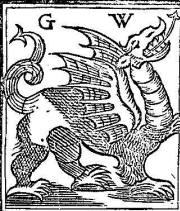 |
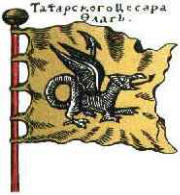 |
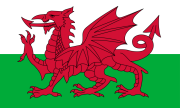 |
John
Macintoch (published in 1844)
Rolando Araujo Solis (published in 1965)
Two more works are also known to discuss the astonishing similarity of the languages of
the American
Indians, including the Mayan language, with the Türkic languages. One of them belongs to John
Macintosh,
who in the work published in Washington in 1853 discusses the origin of Northern America
Indians and puts forward a genetic relationship of Sioux-Hoka Indian language with the Türkic languages [40]
 .
.
Linguistic Table
from J.Macintosh 1853 book
"The origin of the North American Indians" |
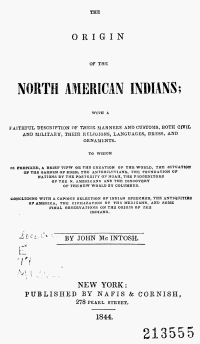 |
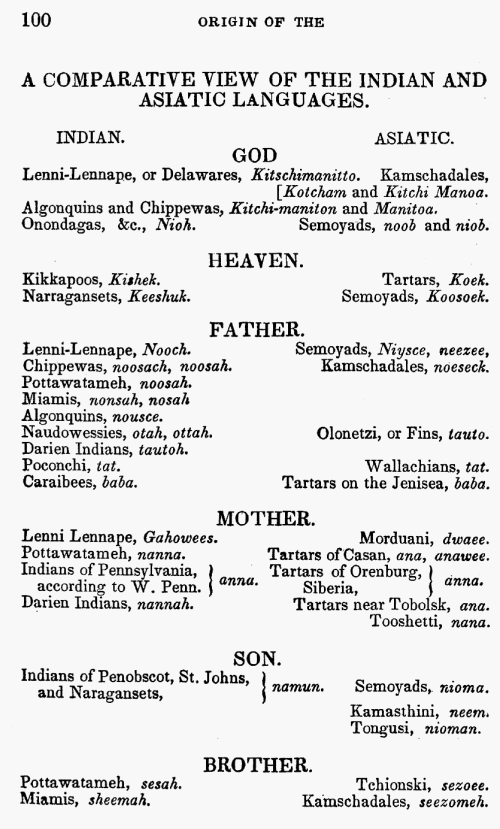 |
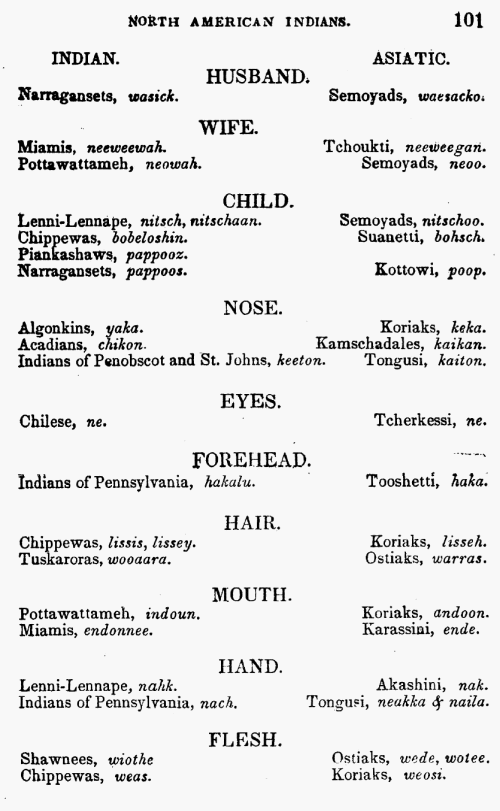 |
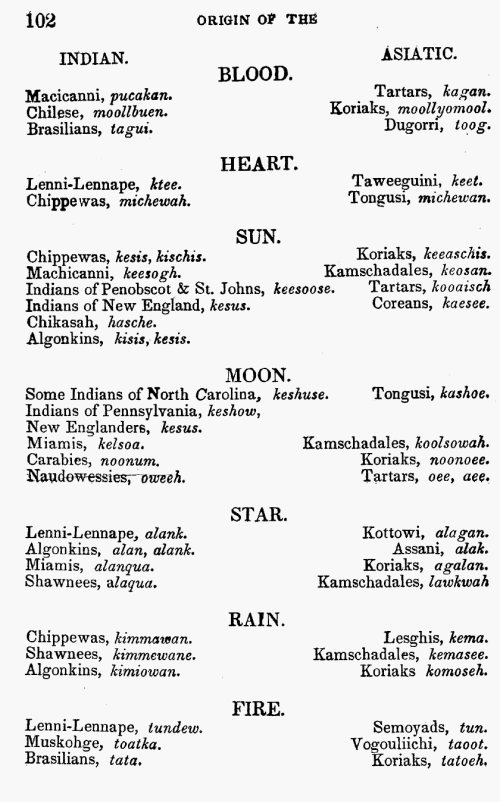 |
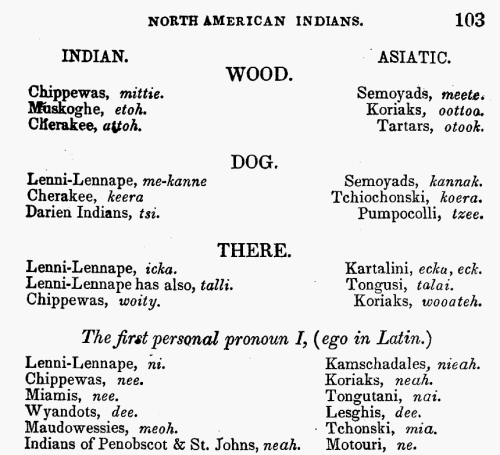 |
The other author, A.R.Aravio, in the comments to the monument of the Maya literature
"I chol
kin"
also addresses the relationship of the Mayan language with the Türkic languages [41]. In support of the
hypotheses both of them (J.Macintoch and A.R.Aravio
- Translator's Note) cite examples from the lexicon of these peoples, we have already
cited above
many of them.
Robert Gordon Latham (1812–1888)
Karl
Julius Platzmann (1832--1902)
This Maya-Türkic connection is apparently addressed in the works of Robert G.Latham [42]
 and Julius Platsmann [43]
and Julius Platsmann [43]
 ,
mentioned by S.Wikander, which we did not find in our (Russian or Soviet
- Translator's Note) book-depositories.
,
mentioned by S.Wikander, which we did not find in our (Russian or Soviet
- Translator's Note) book-depositories.
|
Google Books |
Google Books |
Robert G.Latham Opuscula
Native American thematic pp. 249-420 |
Julius Platsmann list of approx. 1520 Native American words
with suggested cognates |
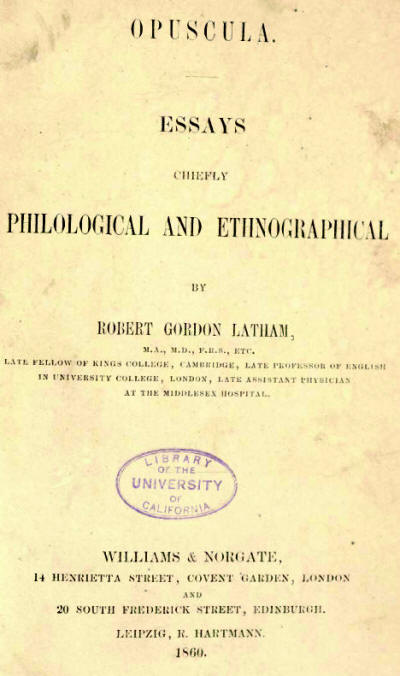 |
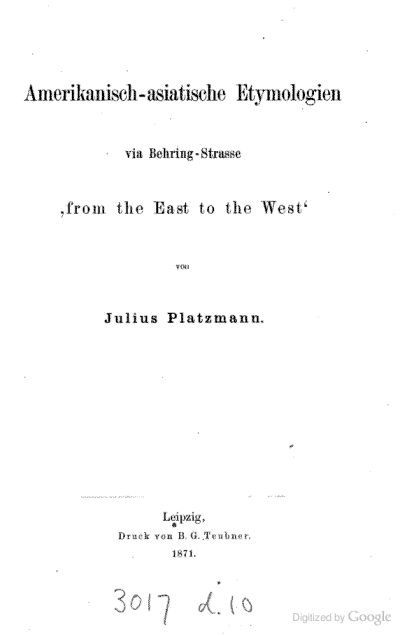 |
As we can see, the question of similarity of some American Indian languages with languages
of peoples of Asia, first of all, with the Türkic languages, already examined a number of scientists. Some
observations about the similarity of some Indian languages with the languages of Asia and Europe are
also noted in the works of a Soviet scientist N.F.Yakovlev, he states the presence of the
most ancient connections between the languages of Caucasus, Asia and America [44], he sees "identical or
similar features" between these languages. He explains this phenomenon by "the most ancient
migratory and cultural connections that linked two continents during a particular epoch". The author,
first of all, addresses phonetical and morphological similarities, but unfortunately almost does
not cites examples in support of his hypothesis. Among his rare lexical examples we
noted two words: "ket" ("kit" - leave, go there) and "kel" ("kil"
- go, come here) which are completely identical in the form and phonetics in the Kechua language, and in
the Türkic languages.
I have familiarized with dictionaries of many South America American Indian languages, have
read a number of travel descriptions to various American Indian tribes, diaries and memoirs of white
people who were
living among them [45]; in that literature I found many words close in form and sense to the
Türkic languages words,
they are not cited here in order not to overload this discourse with new examples.
It is believed now that American Indians also settled many islands in the Pacific
ocean. As noted Spanish monks who accompanied conquistadors, the Indians were brave seafarers, on
great rafts
carrying hundreds of people they sailed in the Pacific ocean, far from the coasts of
the America.
A traveler of our days, an outstanding scientist, anthropologist and archeologist Thor Heyerdahl
confirmed it by
sailing on "Kon-tiki" raft. On the Easter island he found, for example, "speaking" plates "rongo-rongo"
that are graphically resembling the Mayan ancient writings destroyed by the Spanish inquisitors, of which
in the European libraries have the only three surviving exemplars. T.Heyerdahl's and other's attempts to read these "rongo-rongo"
were till now unsuccessful. And in reading the ancient Mayan writings, despite of the success made by our scientist Yu.Knorozov,
not all questions are solved yet. As noted V.Vahta, a main reason for that is that "nobody in South American archeology and ethnography undertook
a serious
search for a linguistic key to the rongo-rongo contents yet" [46].
Thor Heyerdahl and other scientists report a presence of a significant layer of
American Indian words in the languages of the many tribes occupying Pacific ocean islands. It gives
reasons to think that the settlers on these islands were Maya, Aztec, and Inka Indians from the
continental Americas, among others. In that light can be attempted etymological understanding of the "Kon-Tiki",
the name of the basalt log raft in the Thor Heyerdahl book, borrowed from an Inca legend. As notes Thor Heyerdahl,
"Kon"
in Inca language means "Sun". As was already seen above, in the Mayan
language "K'in" also means "sun", "day". And "Tik" means
"God", "Leader". Inca language has a word teki in sense "leader, heading, going in the head", from which
comes the word
"tiki". In the Türkic languages the word "teke" means simultaneously a ram-producer,
and a leader of the sheep herd (and "kun" also means "day" and "sun", see
above - Translator's Note).
I.K.Fedorov also finds a certain similarity between Kechua and Polynesian languages, including
with Aymara language [47]. It seems that finding a language key to the rongo-rongo inscriptions is about
to happen, and the solution is already knocking at the door.
This is a brief status review for the comparative studies on American Indian and Altai and Türkic
languages. Also should be noted a work of a Polish scientist T.Milevsky, who from the typological study
of phonetics, asserts a presence of similarity between the Asian
languages and languages of American Indians [48].
Scientists have an opinion about settling
of America from Asia. Specifically, settling through the territories of Chukotka
and Aleutian islands. We would like to support this opinion only partially, because of a number of factors
pointing to the settling of America via the Pacific ocean. This question needs a
separate consideration. Nevertheless, it should be noted that this
hypothesis is supported by linguistic material. Some scientists find in the languages of some
American Indians traces of the Chinese, Japanese and Korean languages [49].
The idea about
possibility of such contacts is supported by archeological finds in Central America of objects of
Japanese origin.
The works devoted to the study of the Japanese, Chinese, and Korean
linguistic traces in the languages of American Indians are few, and they have fewer lexical examples of
these languages among the Indian languages. Notably, they do not assert a morphological or phonetic
similarity typical for these languages. The works of O.Rochrig, S.Wikander,
and B.Ferrario list about forty words from the Japanese, Chinese, and Korean
languages found in Indian languages.
To understand the enormous difficulties which the scientists
face in the comparative studies of American Indian languages with the Altai languages, we will digress into the history
of settling America. In the opinion of the majority of scientists, the settling of America from Asia
occurred 20-30 thousand years ago (Genetical timing is split between 2 of
3 waves, with estimated age of the earliest migration coming from Altai between 10,100 and 17,200
YBP by coastal paths, second wave coming from SE Siberia (Tungus area) between 7,000 and 9,500 YBP
by northern paths, and the last Na-Dene wave estimated at 5,000 YBP by ice or land bridge
- Translator's Note). Some scientists move that date even to 50-100 thousand
years. It is believed that the settling of America occurred in glacial ages, namely, in the last glacial
age (LGM = 20,000 YBP
- Translator's Note), when a significant amount of ocean waters became glaciers on the poles, and
that opened
an overland road from Asia to America. Though the theory of settling America through the Chukchi
bridge and/or Aleutian islands is generally recognized by many historians, it also has some weak
points, which caused a series of new hypotheses.
There is a theory about settling America from Europe,
another theory from Africa, theories that it was populated by Phoenicians, Assyrians, Trojans, Romans,
Etruscans, Greeks, Jews, Hindus and others, that these migrations came through Atlantida, which
supposedly at that time was in the place of the Atlantic
ocean... To confirm these theories, their authors cite examples of the presence in America
of grandiose monuments supposedly built on examples of the Egyptian pyramids, etc. In some
American Indian languages are being found Bask words, the Bask people now live in Spain, they were
famous seafarers, some of them sailing in the ocean could certainly at some time land in America. When in deep
American boonies was found a Jewish
settlement, it started assertions that Maya and Kechua Indian culture was
created by them. But investigation have shown that they moved to America after its
discovery, to escape prosecutions in Europe.
Was advanced a hypothesis about existence in the
Pacific ocean of its Atlantida, between Asia and America, it was named Mo. Supposedly, it was a
bridge between Asia and America. There was even a theory that a grandson of Chingiz-khan Kublai-khan (aka Hublai-khan, 1216-1294) with
a huge army on 800 vessels set out for a conquest of Japan, but in a storm lost his way, and Kurosiwo current brought
them to America, and there they
supposedly created huge buildings.
That on the coasts of the western America were found ceramic
objects of Japanese origin, that in Indian languages are elements of the Japanese, Chinese, Korean,
and Bask languages - all that can be understood.
And anthropologically the Indians do not constitute a uniform race. There are American
Indian tribes of dwarfish statue, reminding pygmies of Africa; in the southern extremity of Latin America
lived tall, stately Patagonians. Among the Indians are plenty of Mongoloids,
but also are Caucasoids, and are tribes in anthropological relation between
these two races [50].
As we can see, the various hypotheses about the settling
of America have certain
reasons, facts
which can't be explained by a theory that holds the settling the continent only through Chukotka, through Aleutian
islands, only from Asia. The Indian mythology corroborates that. Central America Indians have a legend that
in the past white people were their
leaders and brought them to Yucatan, they departed
back into the ocean, promising to return. Shortly before the landing of the Spaniards in Yucatan, a leader of
the Maya Indians dreamt (and dreams had a prophetic meaning for them) that their white leaders
would soon return. And when the Spanish adventurer Cortes with a handful of bandits set ashore, the Indians met
them as their leaders, with great honors, which Cortes with a handful of gangsters used, and they
succeeded in subduing and plundering
a numerous people.
It is believed now that among Maya and Aztec Indians were white-skinned people. When
anthropologists examined the blood group of the Indians, they found that Indians do not have people with
blood group "A". But a serological examination of the leaders' remains has shown
that they had blood group "A", which is typical for the (European) peoples of
the Old World.
That summarizes facts that stimulated new and new hypotheses about settling
America in extreme antiquity.
There are more. Among them we shall point to the Thor Heyerdahl travel on reed
boats "Ra 1" and "Ra 2" from the African coast to the Central America. By his deed the Norwegian
scientist demonstrated a possibility of settling of America from Africa. He
found a number of similarities in the technique of building cane boats in the reservoirs of Peru, Mexico,
and Chile in America, and in Niger, Chile, and Chad in Africa. To "weave" boats from reeds, Kechua Indians from the area of lake Titicacas
were invited to Egypt. That allowed him to posit that the road to America was known to the peoples of Africa, Asia, Europe. The road was
also known to the peoples of Scandinavia [51]. New facts [52] established the existence in the
remote past of Africa and Europe contacts with America in the pre-Columbus period.
In light of the new facts, it is already impossible to assert that the settling of America
went only through Chukotka, Bering strait, and through Aleutian islands; to assert that the settlers did not
come to America
from Asia by the sea route, and also from Europe, and from Africa, and through Oceania. A
possibility
of penetrating America from Asia through Oceania can be also asserted because of the geological changes of
the landmass during the historical period, when America could be reached by
coastal navigation through Oceania [53], as were populated the islands of Oceania, Australia,
and New Zealand.
